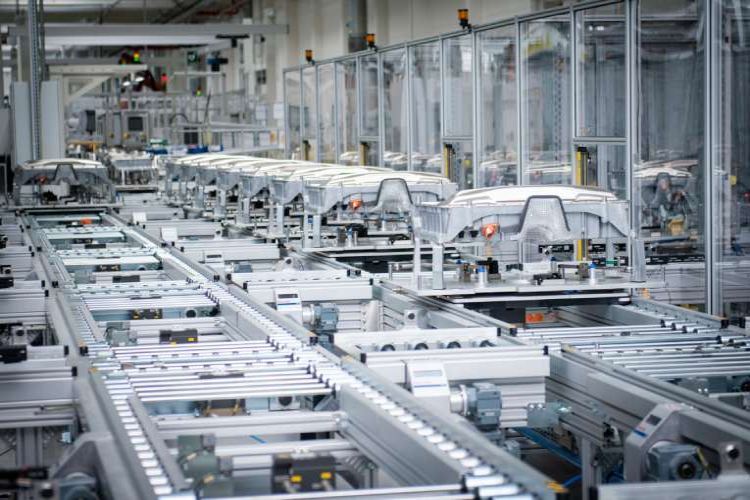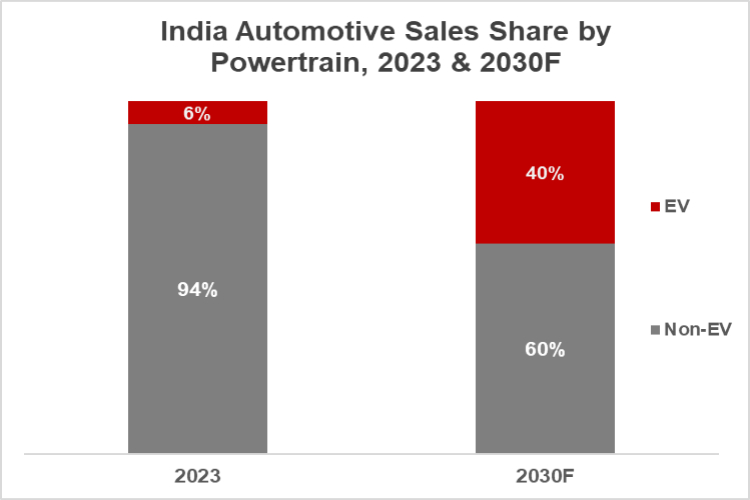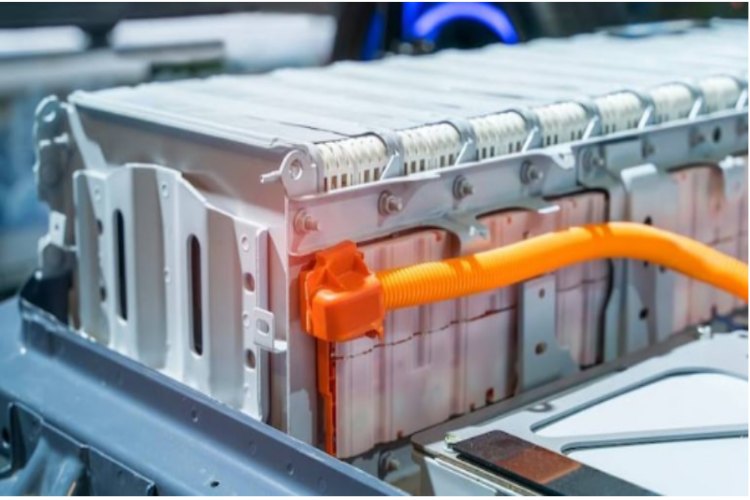
- India needs to run on local ACC manufacturing, creating a robust ecosystem for innovation and economic growth.
What are Advanced Chemistry Cells and Why Are Efforts Being Made to Boost the Ecosystem?
ACCs are cutting-edge advanced storage technologies that have the ability to store electrical energy either as chemical energy or electrochemical energy and convert it back to electric energy when needed. Basically, ACC batteries are mostly used for EVs and energy storage, but they are also massively consumed in numerous other sectors such as UPS, mobile phones, telecom, inverters, etc. According to the experts, growing a domestic advanced cell supply chain ecosystem will help the country become globally competitive in terms of mobility, consumer electronics ecosystem, and grid energy storage. The domestic supply chain will help get rid of the challenges of any sort of supply constraints, which can put the overall battery industry at risk. Currently, India is at the nascent stage of developing its in-house advanced cell manufacturing ecosystem, and speaking of the global supply chain, its presence is very limited. According to the Confederation of Indian Industry (CII), the market demand in the nation for ACC batteries is speculated to grow from a staggering 220 GWh by 2030 to 20 GWh in 2022 at a CAGR of 50 percent.
Why the PLI Scheme for ACCs will be a Game-Changer for India’s EV Industry
Feeling the heat of the importance of ACCs, the union government, after several rounds of discussions, has announced the much-awaited Production-Linked Incentive (PLI) scheme, the 'National Programme on Advanced Chemistry Cell (ACC) Battery Storage’ with a budgetary outlay of Rs 18,000 crore in 2021. With the help of this scheme, India is looking forward to a manufacturing capacity of 50 GigaWatt hours (GWh) of ACC. The aim is to escalate the domestic value addition in EV battery manufacturing and, at the same time, decrease the cost of batteries so that the nation can become globally competitive in the EV ecosystem.
Under the PLI scheme for ACC, around ten companies have submitted their bids. Ola Cell Technologies Pvt. Ltd., ACC Energy Storage Pvt. Ltd., and Reliance New Energy Battery Storage Ltd. have benefited from the scheme, and one of the bidders who had been approved previously has been disqualified by the government for non-compliance with the terms and conditions. Just a month ago, the union government even announced the re-bidding under the PLI for ACC so that the approved bidders could set up a huge battery manufacturing unit of 10 GWh with an outlay of Rs 3,620 crore.
Speaking on how the PLI scheme for ACC will be a game-changer for India’s EV industry, Soumen Mandal, senior automotive researcher at Counterpoint Research, told Circuit Digest exclusively, “India's automotive market is slowly transitioning to EVs. More than 1.5 Mn EVs were sold during 2023, a massive growth of 50 percent YoY. Approximately 40 percent of the initial cost of an electric vehicle (EV) is attributed to batteries, which India mostly imports. This import dependence leads to increased EV costs. The PLI scheme prioritizes the local manufacturing of Advanced Chemistry Cells (ACCs) in India, aiming to establish a more efficient supply chain and reduce battery cell costs, thereby making EVs more economical. In 2023, around six percent of sales were contributed by EVs in the automobile segment, and by 2030, 40 percent of sales will be contributed by electric cars. This will be possible if the PLI for ACC and FAME 11 is successfully implemented.”

Although India is working hard to boost the ACC battery storage capacity, industry leaders feel that the supply chain and finding the right talent are the major hurdles for firms to set up lithium-ion cell manufacturing units.
With a focus on maximizing domestic value addition, the PLI scheme encourages investments in Giga-scale ACC and battery manufacturing facilities, which will not only drive technological advancements but also create employment opportunities. Furthermore, by incentivizing continuous sales of domestically manufactured batteries, the scheme instills confidence in manufacturers to invest in long-term sustainability and innovation. Overall, the PLI scheme for ACC has the potential to revolutionize the EV battery ecosystem in India by fostering a competitive and self-reliant industry while accelerating the adoption of electric vehicles nationwide.
The Current Challenges in India’s ACC Battery Ecosystem
Although various initiatives have been undertaken to grow the ecosystem and become self-reliant, experts feel that the limited availability of key raw materials like lithium and cobalt poses a significant challenge to battery manufacturing. This shortage often leads to dependency on imports, which can be expensive and subject to geopolitical risks. Then, the cost of imports is another major challenge in this ecosystem. Importing raw materials from foreign countries, particularly China, can be costly due to tariffs, transportation costs, and currency fluctuations. This adds to the overall manufacturing expenses, impacting the competitiveness of domestically produced batteries. There are huge regulatory hurdles. The stringent rules and regulations, both domestic and international, can create barriers to manufacturing and exporting batteries. Compliance with environmental standards, safety regulations, and trade policies adds complexity and cost to the process.
Sonam Motwani, CEO and Founder at Karkhana.io, told Circuit Digest, “While some lithium reserves have been identified in India, the exploration and processing of these resources are still in progress. Developing domestic capabilities for mining and refining lithium could help reduce dependence on imports. Manufacturing advanced chemistry cells requires sophisticated techniques and infrastructure. Ensuring that manufacturing facilities are equipped with the latest technology and skilled personnel is essential but can be costly and challenging to implement.”
Despite India's increasing demand, India’s dependence on imports highlights the huge gap in domestic production. Investment in batteries continues, and the lack of ACC facilities hampers self-sufficiency. India needs to run on local ACC manufacturing, creating a robust ecosystem for innovation and economic growth. The PLI initiative is an important step in this direction, catalyzing India’s journey towards energy independence and global competitiveness in the EV revolution.
Imports are always the major concern for India, both in terms of electronics manufacturing and electric vehicles. The country lacks the ecosystem and the policies to develop the raw materials. For instance, Lithium has been discovered on a large scale in Jammu, but a lack of advanced equipment, policies, political constraints, and environmental issues makes us more dependent on China.
Highlighting the major cause of imports and other barriers in this ecosystem, Rohit Pandit, Managing Director, Shuzlan Energy, said, "The challenges to the ACC ecosystem are multifaceted. First, it relies heavily on imports to meet demand, highlighting the lack of strong domestic manufacturing capacity. Second, existing investments in batteries do not meet global standards, hindering scalability and competitiveness. Furthermore, low prices lead to increased dependence on foreign suppliers. To address these issues, India needs strategic investments in ACC manufacturing, coupled with incentives for R&D and innovation. Collaboration between industry and academia can foster technological development, while structural change can encourage the integration of local production and supply chains. Ultimately, fostering a healthy ecosystem is key to achieving self-sufficiency and global competitiveness in the ACC region."
To reduce dependence on thermal energy and decrease air pollution on a large scale, the government of India even approved the National Mission on Transformative Mobility and Battery Storage in March 2019 to enhance clean mobility. The price of Li-ion batteries has been reducing at a rapid scale and is therefore accelerating the market for battery storage internationally. According to the government’s think tank public policy agency, Niti Aayog, the price of Li-ion batteries has been reducing at a CAGR of 20 percent.

The positive scenario is that the country both has the talent and the resources to set up cells and battery packs. Although numerous firms have already begun investing in the assembly of battery packs, the capacities of these units are not large when compared to international averages. The entire value addition and investment in ACC manufacturing are still very low in the nation, and therefore, over 80 percent of the demand for ACCs is still met through imports, mostly from China.
How India Can Tackle the Challenges in the Coming Years
In an effort to meet this huge demand in the EV industry, various countries have already started manufacturing the battery storage ecosystem on a rapid scale. Manufacturing capacities over 5 GWh/year have already started developing all over the world. According to a survey by NITI Aayog, China has responded to this demand faster, with 78 percent of international manufacturing capacity for batteries, while Europe and the US hold a share of 7 percent and 8 percent, respectively. Researchers even feel that the anticipated capacity additions between 2022 and 2025 will surpass 1,450 GWh of new annual production capacity internationally, with China holding the majority of the market share and Europe as the emerging epicenter of higher growth.
Now, if India wants to improve its overall battery manufacturing ecosystem, then a phased approach is needed that can merge a large volume of the value chain over time as domestic demand escalates and in-house scientific proficiency and capacity improve to meet the demand. Therefore, a coordinated and strategic approach is the urgent need of the hour. Continued government support through initiatives like the ACC PLI scheme is crucial. Policies that incentivize domestic production, research and development, and exploration of raw materials can help overcome challenges related to shortages and import dependency.
At the same time, investing in R&D to develop alternative battery chemicals or improve existing technologies can mitigate the impact of raw material shortages and reduce manufacturing costs. Most importantly, the challenges in this ecosystem can be addressed impeccably through collaboration with other countries, and international organizations can facilitate knowledge sharing, technology transfer, and access to raw materials. Establishing partnerships for the joint exploration and processing of resources can help diversify the supply chain.
What’s more essential is building infrastructure for mining, refining, and manufacturing batteries domestically. On the other hand, addressing environmental concerns associated with battery manufacturing is important. Implementing sustainable practices, such as recycling and minimizing resource consumption, can mitigate the environmental impact and ensure the long-term viability of the industry. By countering these challenges and implementing strategic solutions, the ACC ecosystem for batteries can be strengthened, enabling sustainable growth and competitiveness in the global market.
"Currently, India's ACC ecosystem is nascent, and we must wait a few years for the market to mature and address these challenges effectively. Advanced Chemistry Cells (ACC) represent innovative power storage technologies that have the potential to store electric energy as either electrochemical or chemical energy. They can subsequently convert this energy back into electricity as needed. Given the anticipated surge in battery demand over the next decade, almost all major global battery manufacturers are actively investing in ACC technology from a commercial standpoint," added Soumen.





